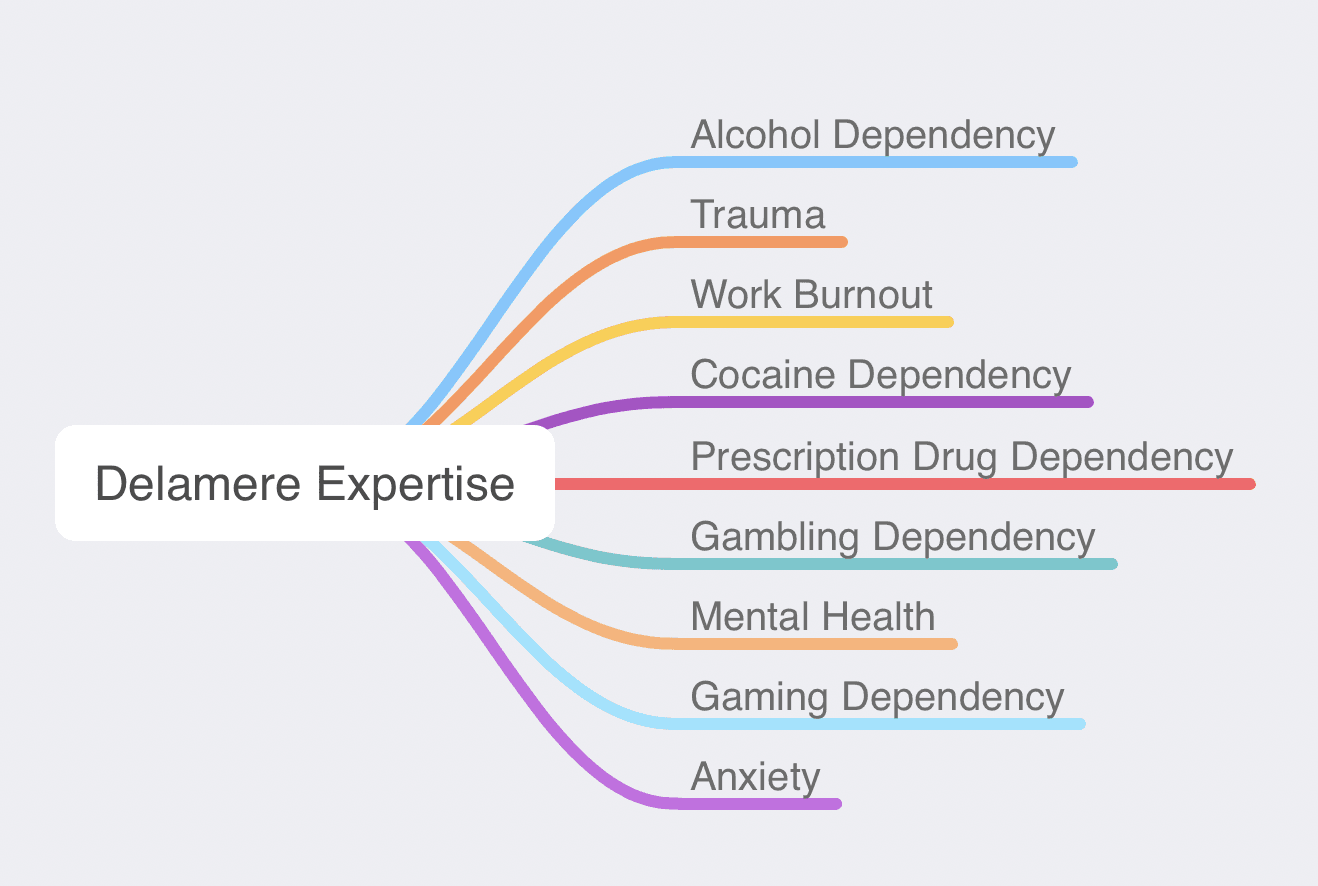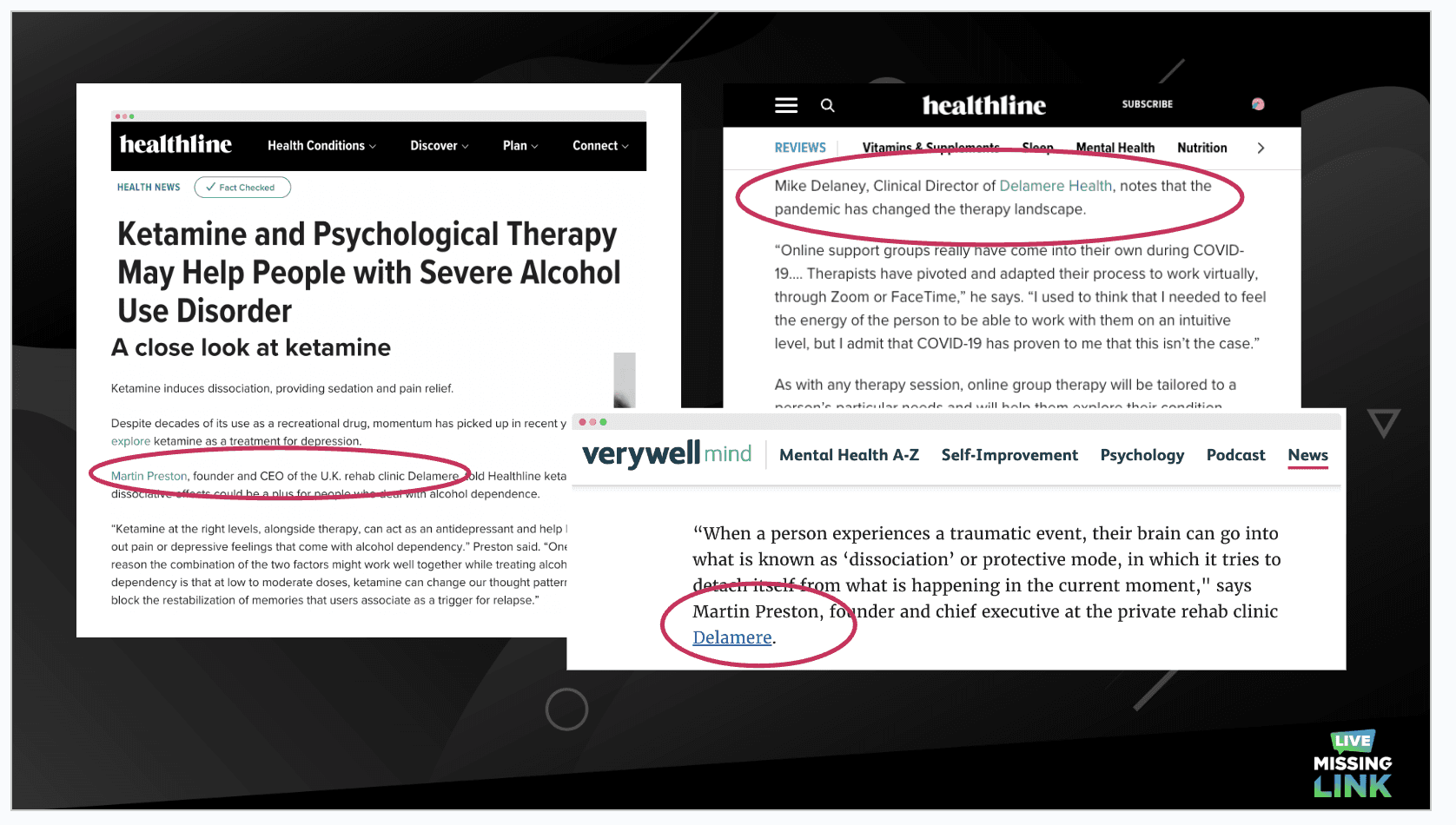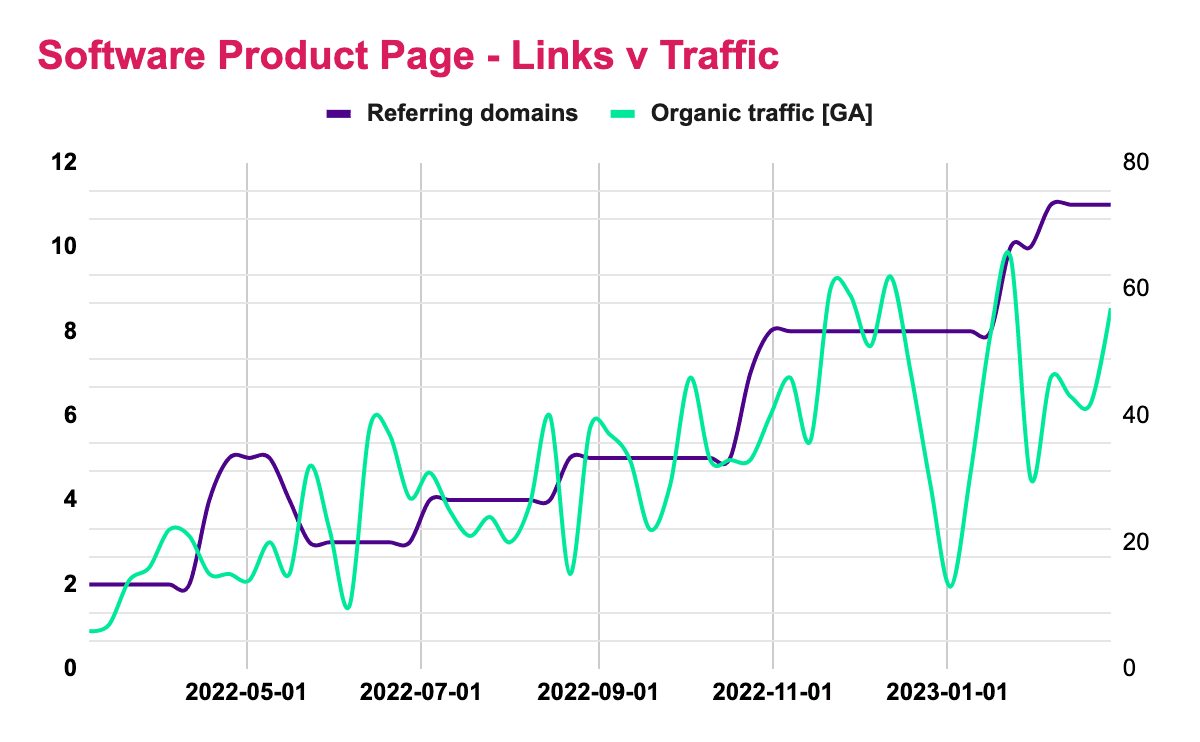MARKETING
How to Use Digital PR to Improve E-E-A-T Signals

The author’s views are entirely their own (excluding the unlikely event of hypnosis) and may not always reflect the views of Moz.
If there is poor quality information being served up in the SERPs, Google will have a big problem: Users will stop searching, and this hits Google where it hurts — in their advertising revenue.
So it makes sense that Google is keen to push forward authoritative and trustworthy sites when it comes to ranking in the results. Towards the end of 2022, Google updated three key areas of the algorithm that it uses to judge where it ranks websites within search engine results pages. The helpful content update, link spam update, and E-A-T — which is now known as E-E-A-T.
Distrust is now our default emotion
Nearly six in 10 consumers say their default tendency is to distrust something until they see EVIDENCE it is trustworthy. If you’re working with brands in typically untrusted verticals, such as health, finance, banking, lending, e-commerce, recruitment, legal, etc., then I am sorry to say that Google won’t automatically trust you.
In this post, I’ll share the digital PR tactics you can use to help to improve your E-E-A-T signals, explain why building trust and credibility needs to be at the top of your list if you want to have greater visibility in the SERPs, and share success stories that showcase how these tactics have led to commercial gains for brands in typically untrusted sectors.
What is E-E-A-T?
E-E-A-T stands for Experience, Expertise, Authoritativeness and Trustworthiness, and these are the four qualities that your brand should have if you want to have the best chance of ranking well and providing the best experience for your audience.
Experience
Experience is the newest addition to E-E-A-T, highlighting the need for brands to demonstrate experience in whatever topic or subject matter the brand wants to be known for.
Digital PR is one of the most effective ways for brands in any sector to demonstrate experience, by securing coverage on external, topically-relevant websites showcasing your first-hand experience. This can be done through thought leadership articles, supplying journalists with insight into relevant news stories and even sharing brand-owned data to showcase credibility in a subject area.
Expertise
Expertise is one of the most important attributes for brands to demonstrate to Google, and digital PR is the perfect vehicle for doing this.
If your CEO has been interviewed, or has written an article, for a key trade publication, these can help you establish credibility through expertise. However, brands need to be mindful that they only comment and contribute to the industry areas where they are true experts, otherwise they run the risk of diluting their credibility and destroying the hard work they are putting in.
Authoritativeness
Backlinks and brand mentions can supercharge your SEO strategy and are an incredibly effective way to build brand authority.
By earning links and brand mentions in relevant, credible, and well-respected media titles, you’ll be showing Google that you’re the most authoritative brand to include in their search results.
Relevance is key when it comes to building topical authority via digital PR, so it’s important to focus on the quality of the backlinks that your brand is earning, compared to the sheer volume of them.
Let’s use the Moz Blog as an example here. As you’d expect, it’s a very high authority website, with a domain authority of 91. For the digital PR agency I work for, JBH, writing content for Moz will ensure that Google understands that JBH has the approval from a high authority, credible domain and, in turn, should reward us through increased organic search engine visibility.
However the content I produce for the Moz blog on behalf of JBH needs to reflect our collective expertise, which is digital PR. It wouldn’t make any sense (or help with our topical authority) for me to write an article about PPC on the Moz Blog, for example.
Trustworthiness
Google now places trust at the heart of its algorithm, with experience, expertise, and authority all feeding into it.
Using digital PR can help brands do this really effectively by earning backlinks from relevant, credible and established publications. We know earned media is far more valuable than paid media as it is secured on the basis of expertise and experience.
Journalists hold the keys to the publication they write for, and will only mention a brand, or reference an expert if it adds value and credibility to whatever they are writing, and provides additional value to their readers.
How can digital PR help brands demonstrate each of the E-E-A-T criteria?
Now that we’ve unpacked what E-E-A-T stands for and why digital PR is the perfect vehicle to deliver each of the key elements, we’re going to look at a range of digital PR tactics and how they can be repositioned to demonstrate each one.
Tactic 1: Using thought leadership to demonstrate experience and expertise
When Google sets out to discover whether a site is to be trusted or not, they will crawl the web looking for signals that demonstrate experience and expertise. This can be in the form of interviews, articles in industry publications, or commentary on news events in relevant niches, amongst many others.
But these pieces of content don’t happen by accident — they should be carefully crafted in order to showcase the experience and experience of the person behind them.
Joel Kurtzman, founding editor of Strategy+Business magazine, explains that, “A thought leader is recognised by peers, customers and industry experts as someone who has distinctly original ideas, unique points of view and new insights.”
Meaning that not everyone can (or should) be a thought leader. A thought leader needs to provide relevance and engagement in order to demonstrate experience and expertise properly.
Success story: How thought leadership digital PR activity improved E-E-A-T signals for a brand in the healthcare space
For a brand in the addiction recovery space, we identified that they needed to improve their E-E-A-T signals in order to be able to compete with more well-known brands dominating the search results AND to prove to Google they were a brand trustworthy enough to include in the search engine results pages.
This healthcare brand had tons of experience and expertise in-house: mental health nurses, addiction therapists, and psychologists were just some of the experts we had access to for this activity. What’s more, the founder had been through the addiction recovery process, so they were perfect candidates for our thought leadership activity.
We used the principles of thought leadership to build digital trust by:
-
Identifying the best people within the business to be our thought leadership champions.
-
Interviewing them to discover what they are most passionate about.
-
Uncovering the most interesting parts of their job role and started thinking about PR stories we could create around those things.

The result? We found that journalists from relevant publications (e.g. health editors) were excited to use our experts to add credibility to their editorial.
How does this promote experience and expertise?
-
The content sits within the relevant sections on large publications (e.g. the health section),
-
The keywords we want to rank for are used within the content.
-
Any links we generate point back to the relevant service page on the site — a vote of trust through the link.

Tactic 2: Earning regular backlinks from relevant titles to demonstrate authoritativeness
One of the oldest and most well-known E-E-A-T signals are backlinks from high authority third party sites pointing into the page you want to rank in the search engine results.
This isn’t necessarily new information, but the type of links that demonstrate the authority of your brand might be different to what you first thought.
Many times in my career I have been told by a client that they need brand new referring domains and they need to be from top tier national publications. There is a time and a place for those types of links (you might be trying to create or close a link gap, for example), but if we look at how Google has told us they judge websites placing high importance on trustworthy and helpful content, I would argue that regular links from hyper-relevant titles have just as much impact, if demonstrating authority in a niche is our end goal.
Success story: How regular links in hyper-relevant titles improved E-E-A-T signals for a brand in the healthcare software space
In 2022, a B2B healthcare software provider asked us to help with their digital PR. We earned six links to their software product page, from three hyper-relevant publications.

The impact was huge. We saw a 219% increase in traffic to the page year-on-year and the client reported back that they had increased leads through that page.
By getting repeat coverage on a topically relevant site you’re proving you’re a trusted expert to audiences and to Google. Your audience is likely to be more engaged and spend longer reading the content and an engaged audience is more likely to convert, proving the commercial value of digital PR.
Demonstrating authority isn’t about ego. It’s about giving a platform to knowledgeable professionals who are passionate about what they do and proving to Google that the information you supply is helpful, credible and authoritative
Tactic 3: Data-led digital PR campaigns to demonstrate trustworthiness
Brand-owned or proprietary data helps demonstrate trustworthiness. Whether you’re using anonymised customer data or other methods, original research reports are always a sign of quality.
Data-driven PR campaigns build trust with potential customers, journalists and Google by going the extra mile. You’re not just providing an opinion, you’re providing evidence to back up why you’re saying what you’re saying.
This type of content is perfect for attracting relevant, high quality backlinks at scale which in turn leads to more eyeballs on your research, increased brand awareness and therefore votes of trust through those links.
Success story: How brand-owned data drove trust for a money saving website
For a global money saving coupon brand we used brand-owned data to tap into a trending pop-culture moment – the ‘House of Gucci’ film starring Lady Gaga and Adam Driver.
One of our priority pages was the Gucci landing page on the site, so we were able to place our client, the page and their data-backed insights at the heart of the trend.
Capitalising on the buzz surrounding the much-anticipated release of the movie, we attributed a spike in user traffic from customers looking for vintage Gucci discount codes. Alongside this statistic we included commentary from our client to explain the increase in demand.

Brand-owned data is great for building trust, but only if:
-
The data can be fact-checked and verified by the journalists who want to use it.
-
It supports and adds credibility to the story being presented.
-
Has a sound methodology to show how you sourced the information.
Digital PR is just one part of the E-E-A-T puzzle
Digital PR isn’t just about building a volume of links anymore. Repositioning your digital PR activity to focus on the key elements of E-E-A-T is a sure-fire way to generate impactful results without needing to focus on volume.
The brands who invest in trust-building techniques and follow the principles of E-E-A-T will overtake the brands who do not. Google has been quite transparent with what they expect from brands and their websites.
SEOs and PR professionals need to use a blend of techniques that match the brand they are working for. Not every brand has a credible expert, but might instead have some great brand-owned data that can be used to build credibility.
MARKETING
Tinuiti Marketing Analytics Recognized by Forrester

Rapid Media Mix Modeling and Proprietary Tech Transform Brand Performance
Tinuiti, the largest independent full-funnel performance marketing agency, has been included in a recent Forrester Research report titled, “The Marketing Analytics Landscape, Q2 2024.” This report comprehensively overviews marketing analytics markets, use cases, and capabilities. B2C marketing leaders can use this research by Principal Analyst Tina Moffett to understand the intersection of marketing analytics capabilities and use cases to determine the vendor or service provider best positioned for their analytics and insights needs. Moffett describes the top marketing analytics markets as advertising agencies, marketing dashboards and business intelligence tools, marketing measurement and optimization platforms and service providers, and media analytics tools.
As an advertising agency, we believe Tinuiti is uniquely positioned to manage advertising campaigns for brands including buying, targeting, and measurement. Our proprietary measurement technology, Bliss Point by Tinuiti, allows us to measure the optimal level of investment to maximize impact and efficiency. According to the Forrester report, “only 30% of B2C marketing decision-makers say their organization uses marketing or media mix modeling (MMM),” so having a partner that knows, embraces, and utilizes MMM is important. As Tina astutely explains, data-driven agencies have amplified their marketing analytics competencies with data science expertise; and proprietary tools; and tailored their marketing analytics techniques based on industry, business, and data challenges.
Our Rapid Media Mix Modeling sets a new standard in the market with its exceptional speed, precision, and transparency. Our patented tech includes Rapid Media Mix Modeling, Always-on Incrementality, Brand Equity, Creative Insights, and Forecasting – it will get you to your Marketing Bliss Point in each channel, across your entire media mix, and your overall brand performance.
As a marketing leader you may ask yourself:
- How much of our marketing budget should we allocate to driving store traffic versus e-commerce traffic?
- How should we allocate our budget by channel to generate the most traffic and revenue possible?
- How many customers did we acquire in a specific region with our media spend?
- What is the impact of seasonality on our media mix?
- How should we adjust our budget accordingly?
- What is the optimal marketing channel mix to maximize brand awareness?
These are just a few of the questions that Bliss Point by Tinuiti can help you answer.
Learn more about our customer-obsessed, product-enabled, and fully integrated approach and how we’ve helped fuel full-funnel outcomes for the world’s most digital-forward brands like Poppi & Toms.
The Landscape report is available online to Forrester customers or for purchase here.
MARKETING
Ecommerce evolution: Blurring the lines between B2B and B2C

Understanding convergence
B2B and B2C ecommerce are two distinct models of online selling. B2B ecommerce is between businesses, such as wholesalers, distributors, and manufacturers. B2C ecommerce refers to transactions between businesses like retailers and consumer brands, directly to individual shoppers.
However, in recent years, the boundaries between these two models have started to fade. This is known as the convergence between B2B and B2C ecommerce and how they are becoming more similar and integrated.
Source: White Paper: The evolution of the B2B Consumer Buyer (ClientPoint, Jan 2024)
What’s driving this change?
Ever increasing customer expectations
Customers today expect the same level of convenience, speed, and personalization in their B2B transactions as they do in their B2C interactions. B2B buyers are increasingly influenced by their B2C experiences. They want research, compare, and purchase products online, seamlessly transitioning between devices and channels. They also prefer to research and purchase online, using multiple devices and channels.
Forrester, 68% of buyers prefer to research on their own, online . Customers today expect the same level of convenience, speed, and personalization in their B2B transactions as they do in their B2C interactions. B2B buyers are increasingly influenced by their B2C experiences. They want research, compare, and purchase products online, seamlessly transitioning between devices and channels. They also prefer to research and purchase online, using multiple devices and channels
Technology and omnichannel strategies
Technology enables B2B and B2C ecommerce platforms to offer more features and functionalities, such as mobile optimization, chatbots, AI, and augmented reality. Omnichannel strategies allow B2B and B2C ecommerce businesses to provide a seamless and consistent customer experience across different touchpoints, such as websites, social media, email, and physical stores.
However, with every great leap forward comes its own set of challenges. The convergence of B2B and B2C markets means increased competition. Businesses now not only have to compete with their traditional rivals, but also with new entrants and disruptors from different sectors. For example, Amazon Business, a B2B ecommerce platform, has become a major threat to many B2B ecommerce businesses, as it offers a wide range of products, low prices, and fast delivery
“Amazon Business has proven that B2B ecommerce can leverage popular B2C-like functionality” argues Joe Albrecht, CEO / Managing Partner, Xngage. . With features like Subscribe-and-Save (auto-replenishment), one-click buying, and curated assortments by job role or work location, they make it easy for B2B buyers to go to their website and never leave. Plus, with exceptional customer service and promotional incentives like Amazon Business Prime Days, they have created a reinforcing loyalty loop.
And yet, according to Barron’s, Amazon Business is only expected to capture 1.5% of the $5.7 Trillion addressable business market by 2025. If other B2B companies can truly become digital-first organizations, they can compete and win in this fragmented space, too.”
If other B2B companies can truly become digital-first organizations, they can also compete and win in this fragmented space
Joe AlbrechtCEO/Managing Partner, XNGAGE
Increasing complexity
Another challenge is the increased complexity and cost of managing a converging ecommerce business. Businesses have to deal with different customer segments, requirements, and expectations, which may require different strategies, processes, and systems. For instance, B2B ecommerce businesses may have to handle more complex transactions, such as bulk orders, contract negotiations, and invoicing, while B2C ecommerce businesses may have to handle more customer service, returns, and loyalty programs. Moreover, B2B and B2C ecommerce businesses must invest in technology and infrastructure to support their convergence efforts, which may increase their operational and maintenance costs.
How to win
Here are a few ways companies can get ahead of the game:
Adopt B2C-like features in B2B platforms
User-friendly design, easy navigation, product reviews, personalization, recommendations, and ratings can help B2B ecommerce businesses to attract and retain more customers, as well as to increase their conversion and retention rates.
According to McKinsey, ecommerce businesses that offer B2C-like features like personalization can increase their revenues by 15% and reduce their costs by 20%. You can do this through personalization of your website with tools like Product Recommendations that help suggest related products to increase sales.
Focus on personalization and customer experience
B2B and B2C ecommerce businesses need to understand their customers’ needs, preferences, and behaviors, and tailor their offerings and interactions accordingly. Personalization and customer experience can help B2B and B2C ecommerce businesses to increase customer satisfaction, loyalty, and advocacy, as well as to improve their brand reputation and competitive advantage. According to a Salesforce report, 88% of customers say that the experience a company provides is as important as its products or services.
Market based on customer insights
Data and analytics can help B2B and B2C ecommerce businesses to gain insights into their customers, markets, competitors, and performance, and to optimize their strategies and operations accordingly. Data and analytics can also help B2B and B2C ecommerce businesses to identify new opportunities, trends, and innovations, and to anticipate and respond to customer needs and expectations. According to McKinsey, data-driven organizations are 23 times more likely to acquire customers, six times more likely to retain customers, and 19 times more likely to be profitable.
What’s next?
The convergence of B2B and B2C ecommerce is not a temporary phenomenon, but a long-term trend that will continue to shape the future of ecommerce. According to Statista, the global B2B ecommerce market is expected to reach $20.9 trillion by 2027, surpassing the B2C ecommerce market, which is expected to reach $10.5 trillion by 2027. Moreover, the report predicts that the convergence of B2B and B2C ecommerce will create new business models, such as B2B2C, B2A (business to anyone), and C2B (consumer to business).
Therefore, B2B and B2C ecommerce businesses need to prepare for the converging ecommerce landscape and take advantage of the opportunities and challenges it presents. Here are some recommendations for B2B and B2C ecommerce businesses to navigate the converging landscape:
- Conduct a thorough analysis of your customers, competitors, and market, and identify the gaps and opportunities for convergence.
- Develop a clear vision and strategy for convergence, and align your goals, objectives, and metrics with it.
- Invest in technology and infrastructure that can support your convergence efforts, such as cloud, mobile, AI, and omnichannel platforms.
- Implement B2C-like features in your B2B platforms, and vice versa, to enhance your customer experience and satisfaction.
- Personalize your offerings and interactions with your customers, and provide them with relevant and valuable content and solutions.
- Leverage data and analytics to optimize your performance and decision making, and to innovate and differentiate your business.
- Collaborate and partner with other B2B and B2C ecommerce businesses, as well as with other stakeholders, such as suppliers, distributors, and customers, to create value and synergy.
- Monitor and evaluate your convergence efforts, and adapt and improve them as needed.
By following these recommendations, B2B and B2C ecommerce businesses can bridge the gap between their models and create a more integrated and seamless ecommerce experience for their customers and themselves.
MARKETING
Streamlining Processes for Increased Efficiency and Results

How can businesses succeed nowadays when technology rules? With competition getting tougher and customers changing their preferences often, it’s a challenge. But using marketing automation can help make things easier and get better results. And in the future, it’s going to be even more important for all kinds of businesses.
So, let’s discuss how businesses can leverage marketing automation to stay ahead and thrive.
Benefits of automation marketing automation to boost your efforts
First, let’s explore the benefits of marketing automation to supercharge your efforts:
Marketing automation simplifies repetitive tasks, saving time and effort.
With automated workflows, processes become more efficient, leading to better productivity. For instance, automation not only streamlines tasks like email campaigns but also optimizes website speed, ensuring a seamless user experience. A faster website not only enhances customer satisfaction but also positively impacts search engine rankings, driving more organic traffic and ultimately boosting conversions.
Automation allows for precise targeting, reaching the right audience with personalized messages.
With automated workflows, processes become more efficient, leading to better productivity. A great example of automated workflow is Pipedrive & WhatsApp Integration in which an automated welcome message pops up on their WhatsApp
within seconds once a potential customer expresses interest in your business.
Increases ROI
By optimizing campaigns and reducing manual labor, automation can significantly improve return on investment.
Leveraging automation enables businesses to scale their marketing efforts effectively, driving growth and success. Additionally, incorporating lead scoring into automated marketing processes can streamline the identification of high-potential prospects, further optimizing resource allocation and maximizing conversion rates.
Harnessing the power of marketing automation can revolutionize your marketing strategy, leading to increased efficiency, higher returns, and sustainable growth in today’s competitive market. So, why wait? Start automating your marketing efforts today and propel your business to new heights, moreover if you have just learned ways on how to create an online business
How marketing automation can simplify operations and increase efficiency
Understanding the Change
Marketing automation has evolved significantly over time, from basic email marketing campaigns to sophisticated platforms that can manage entire marketing strategies. This progress has been fueled by advances in technology, particularly artificial intelligence (AI) and machine learning, making automation smarter and more adaptable.
One of the main reasons for this shift is the vast amount of data available to marketers today. From understanding customer demographics to analyzing behavior, the sheer volume of data is staggering. Marketing automation platforms use this data to create highly personalized and targeted campaigns, allowing businesses to connect with their audience on a deeper level.
The Emergence of AI-Powered Automation
In the future, AI-powered automation will play an even bigger role in marketing strategies. AI algorithms can analyze huge amounts of data in real-time, helping marketers identify trends, predict consumer behavior, and optimize campaigns as they go. This agility and responsiveness are crucial in today’s fast-moving digital world, where opportunities come and go in the blink of an eye. For example, we’re witnessing the rise of AI-based tools from AI website builders, to AI logo generators and even more, showing that we’re competing with time and efficiency.
Combining AI-powered automation with WordPress management services streamlines marketing efforts, enabling quick adaptation to changing trends and efficient management of online presence.
Moreover, AI can take care of routine tasks like content creation, scheduling, and testing, giving marketers more time to focus on strategic activities. By automating these repetitive tasks, businesses can work more efficiently, leading to better outcomes. AI can create social media ads tailored to specific demographics and preferences, ensuring that the content resonates with the target audience. With the help of an AI ad maker tool, businesses can efficiently produce high-quality advertisements that drive engagement and conversions across various social media platforms.
Personalization on a Large Scale
Personalization has always been important in marketing, and automation is making it possible on a larger scale. By using AI and machine learning, marketers can create tailored experiences for each customer based on their preferences, behaviors, and past interactions with the brand.
This level of personalization not only boosts customer satisfaction but also increases engagement and loyalty. When consumers feel understood and valued, they are more likely to become loyal customers and brand advocates. As automation technology continues to evolve, we can expect personalization to become even more advanced, enabling businesses to forge deeper connections with their audience. As your company has tiny homes for sale California, personalized experiences will ensure each customer finds their perfect fit, fostering lasting connections.
Integration Across Channels
Another trend shaping the future of marketing automation is the integration of multiple channels into a cohesive strategy. Today’s consumers interact with brands across various touchpoints, from social media and email to websites and mobile apps. Marketing automation platforms that can seamlessly integrate these channels and deliver consistent messaging will have a competitive edge. When creating a comparison website it’s important to ensure that the platform effectively aggregates data from diverse sources and presents it in a user-friendly manner, empowering consumers to make informed decisions.
Omni-channel integration not only betters the customer experience but also provides marketers with a comprehensive view of the customer journey. By tracking interactions across channels, businesses can gain valuable insights into how consumers engage with their brand, allowing them to refine their marketing strategies for maximum impact. Lastly, integrating SEO services into omni-channel strategies boosts visibility and helps businesses better understand and engage with their customers across different platforms.
The Human Element
While automation offers many benefits, it’s crucial not to overlook the human aspect of marketing. Despite advances in AI and machine learning, there are still elements of marketing that require human creativity, empathy, and strategic thinking.
Successful marketing automation strikes a balance between technology and human expertise. By using automation to handle routine tasks and data analysis, marketers can focus on what they do best – storytelling, building relationships, and driving innovation.
Conclusion
The future of marketing automation looks promising, offering improved efficiency and results for businesses of all sizes.
As AI continues to advance and consumer expectations change, automation will play an increasingly vital role in keeping businesses competitive.
By embracing automation technologies, marketers can simplify processes, deliver more personalized experiences, and ultimately, achieve their business goals more effectively than ever before.
-

 SEO7 days ago
SEO7 days agoGoogle Limits News Links In California Over Proposed ‘Link Tax’ Law
-

 SEARCHENGINES6 days ago
SEARCHENGINES6 days agoGoogle Core Update Volatility, Helpful Content Update Gone, Dangerous Google Search Results & Google Ads Confusion
-

 SEO6 days ago
SEO6 days ago10 Paid Search & PPC Planning Best Practices
-

 MARKETING6 days ago
MARKETING6 days ago2 Ways to Take Back the Power in Your Business: Part 2
-

 MARKETING5 days ago
MARKETING5 days ago5 Psychological Tactics to Write Better Emails
-

 SEARCHENGINES5 days ago
SEARCHENGINES5 days agoWeekend Google Core Ranking Volatility
-

 PPC7 days ago
PPC7 days agoCritical Display Error in Brand Safety Metrics On Twitter/X Corrected
-

 MARKETING6 days ago
MARKETING6 days agoThe power of program management in martech













